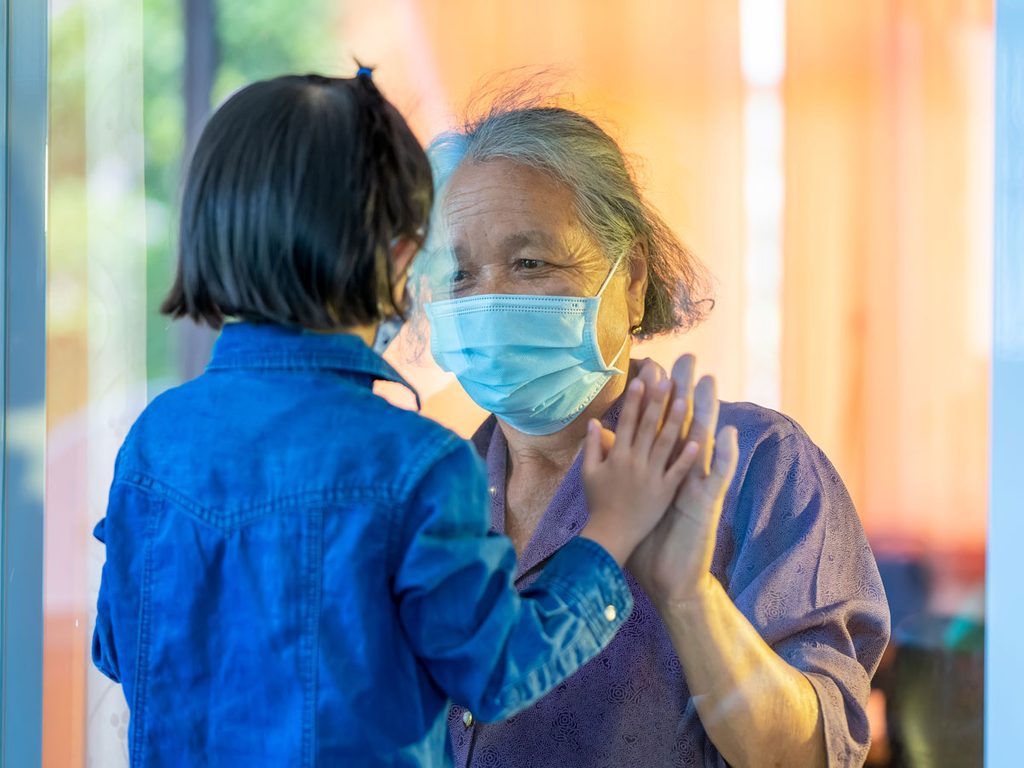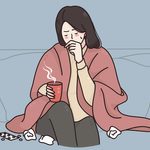‘I Have a Cloud Over Me’: How Isolation Affects Seniors Living at Home

The health effects of social distancing and isolation are severe for seniors living at home through Covid-19.
In May, three months after the novel coronavirus was declared a global pandemic, Stasia Norbett’s already shrinking world got even smaller. After suffering an eye stroke, the 86-year-old was told she wouldn’t regain vision in her left eye and had to give up driving, her main source of independent transportation.
Norbett lives alone and has been largely staying indoors to avoid the virus. Her kids drop off groceries and come by to visit her Mississauga, Ont. home, which makes her happy. But losing partial eyesight and her car has been hard — especially since it’s meant seeing her husband, who’s being cared for in a nursing home, a lot less often. Inside is lonely but outside is dangerous.
“I have a little cloud over me,” she says. “It’s difficult now because there’s no way of getting anywhere.”
The first wave of the Covid-19 pandemic disproportionately hit those in long-term care facilities to devastating effect, but it’s also had a significant impact on seniors living alone at home. Seniors are considered more at-risk for the serious health effects of Covid-19. Many are living with strict limitations on how they interact with others — restrictions that are either self-imposed, or come at the insistence of family terrified of passing on the virus. Many of their social activities, like community groups and seniors programs, have been suspended. The effects of loneliness and isolation are severe.
(Related: I’m Living in a Long-Term Care Home During Covid-19 — Here’s How I’m Coping)
“Social distancing has had a very major impact [on seniors],” says Dr.Verena Menec, a professor of community health sciences at the University of Manitoba, who specializes in aging. “They are losing a big part of their social contact.”
Social isolation and loneliness is associated with numerous negative health outcomes in older adults, including cognitive decline, which can lead to dementia and depression, Menec says. Then there’s the physical health effects: heart disease, stroke and a weakened immune system. Loneliness is also linked to premature death and has been compared to smoking, physical inactivity or obesity in terms of its impact.
The pandemic has also made it hard to do the very things that combat its effects; visiting friends and family, volunteering, going to church, and getting exercise are vital to helping prevent illness.
“A lot of their activities are a combination of stimulation and something that’s good for their health. If they have cognitive decline, for example, they may take an exercise class to improve it,” says Diana Brecher, a clinical psychologist at Ryerson University in Toronto. “So for seniors, it’s not just one thing: it’s a combination of things that they’ve lost.”
(Related: 4 Ways to Boost Your Mental Health During Covid-19)
Caregivers are increasingly filling the wellness gaps caused by Covid-19. One quarter of people over 65 live alone, according to Statistics Canada, with 29 percent of Canadians over 90 living in a private household. Nearly one in four Canadians were caregivers as of 2018, StatsCan reports, with almost half of them caring for aging parents. (This finding is most common among those between the ages 45 and 64.) In Ontario, one of the hardest-hit provinces by Covid-19, there’s been a 22 percent increase in the number of family caregivers since the pandemic began, according to research by the Ontario Caregiver Organization.
“If you have kids at home, you’re caring for elderly parents, and you’re trying to work. . . you might have too many balls in the air. That can be incredibly stressful,” Brecher says.
Mary, a 60-year-old Brantford, Ont. resident (who is using her first name only for privacy reasons), is retired, but looking after her elderly parents has become a full-time job.
Her mom has Parkinson’s and dementia, and uses a wheelchair. Mary says her dad is also showing the early signs of cognitive decline. When Ontario first went into lockdown in March, Mary didn’t go inside her parents’ house for two months, and would only drop off food outside. She was also looking after her grandchildren — their mom is a front-line worker, and Mary didn’t want to risk bringing anything into her parents’ home.
“My father is the primary caregiver of my mother,” Mary says. “We’ve noticed that it’s starting to take a toll on his mental health.”
Now, with decreasing case counts in her daughter’s hospital and her parents’ increasing needs, Mary is at their home nearly everyday. She brings them food, cleans for them, makes sure they have supplies, like masks. She is grateful a personal support worker (PSW) now comes in four times a week; some senior care services were initially affected by the pandemic.
Still, Mary worries about her mom and dad around-the-clock. She calls her father’s landline every hour that her mother needs to take her medication. She is scared what will happen if he forgets to give her pills. Mary says she and her brother plan to have their parents move into a nanny flat at his house in the near future so they aren’t on their own.
The pandemic is confusing to her parents. “My dad has a mask, but he doesn’t understand how to take it off, how to put a clean one on and how to wash it,” she says. “I don’t think my parents could manage without having a PSW and without me checking in every day.”
Brecher looks at the recent nation-wide call to get kids back to school, which is seen as both critical to kids’ mental health and the relief of working parents, and wonders why there hasn’t been a similar call for a safe, gradual return to activities for seniors.
“The age spectrum is vulnerable to the effects of social isolation in different ways because it manifests differently,” she explains. “But I think the issue is the same: people need social stimulation.”
Next: What the Anti-Mask Movement Needs to Know about Covid-19




